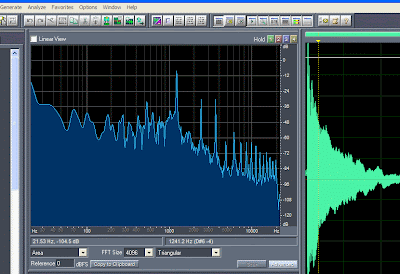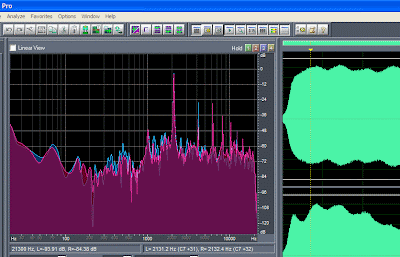This is another take on the same piece I’ve been working on for a while. This version includes adjustments to the tuning of the samples. There were some intonation problems with the marimba, harp, vibes, flute, and balloon drum. To determine pitch I used Cooledit (now called Adobe Audition) and its FFT option. You basically load a sample file and select Analyze-FFT and it puts up a Fast Fourier Transfer window showing the most prominent frequencies, with the pitch in note/cents from 12-EDO for the most prominent frequency. For most non-bass notes that is the fundamental. Here’s one for the harp D#6, 4 cents flat at a point about half a second into the harp sample. 
My Csound preprocessor allows me to put -4 into a list of samples, and Csound adjusts the sample when it’s used in the synthesis instrument. Four cents is not noticiable, for the most part. Anything over 10 is not good.
Most of these samples, from the McGill University Master Samples CDROM library, are not very in tune, and they don’t necessarily hold the same pitch for the whole note. Many go up and down by a few cents from the start to finish.
This is the first time I have systematically used the Cooledit frequency analysis to fine tune the samples. I previously tuned them by ear to a reference sine wave. It was a time consuming process, and error prone. The harp sample was particularly out tune, with one note 43 cents off, and others 10-20 off. The flute was also way out of tune, with the highest note 31 cents sharp. Here’s C6 31 cents sharp one second into the sample. Typical flute player getting excited that he can hit such a high note. I back that sample down by 31 cents and we are good to go.




great stuff!
Carlo Serafini